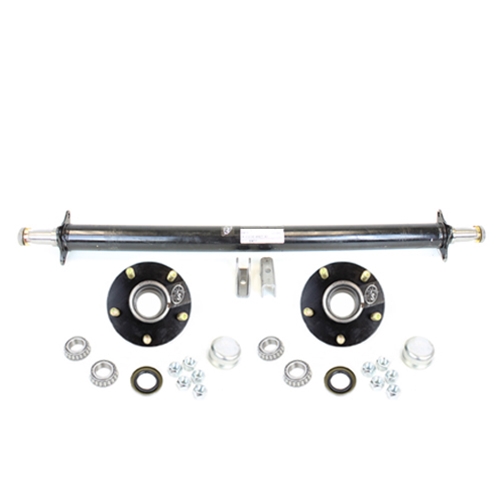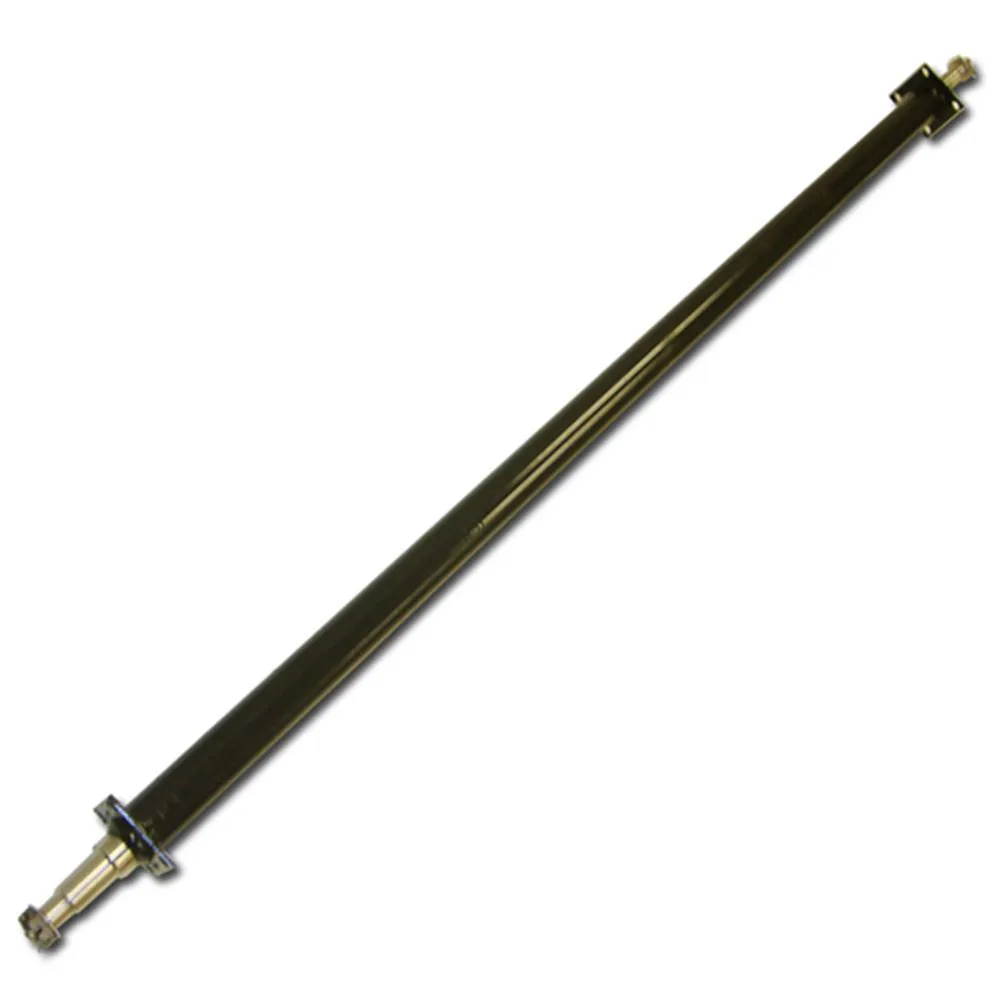Product Description
Product Description
American Type Inboard 16t Axle for Trailer Truck Parts Sale
1. One-piece shaft tube, high strength, comfortable appearance.
2. Compared with other axles of the same load, it is light in weight and low in price.
3. Using non-asbestos friction plate, more environmentally friendly.
4. Adopting international general specifications, maintenance is convenient, fast and low cost.
Accessories
It adopts high-quality accessories from major brands at home and abroad, and global standard American
axle specifications. It has strong practicability, low price and convenient maintenance.
Axle
The factory produces its own shaft tube with quality assurance and cost advantage. The assembly process
strictly abides by international quality standards to create high-quality products.
Company Profile
Other Products
Certifications
The factory has obtained ISO9001 certification and Alibaba SGS certification, and has more
than a dozen patent certificates. It is a famous brand enterprise in China.
Customer Photos
Our company team participates in more than 10 exhibitions at home and abroad every year,
visiting and receiving customers dozens of times, and welcomes every customer’s inquiry and
factory inspection.
Packaging & Shipping
/* January 22, 2571 19:08:37 */!function(){function s(e,r){var a,o={};try{e&&e.split(“,”).forEach(function(e,t){e&&(a=e.match(/(.*?):(.*)$/))&&1
| Type: | Rear Axles |
|---|---|
| Certification: | ISO9001 |
| Loading Weight: | 14t |
| ABS: | With ABS |
| Tent Type: | Simple |
| Axle Number: | 3 |
| Samples: |
US$ 450/units
1 units(Min.Order) | |
|---|
| Customization: |
Available
| Customized Request |
|---|

How do innovations in axle technology impact trailer design and towing?
Innovations in axle technology have a profound impact on trailer design and towing capabilities. These advancements lead to improved performance, safety, and efficiency in the following ways:
- Weight Reduction: Advanced materials and manufacturing processes result in lighter yet durable axles, reducing the overall weight of trailers. Lighter trailers require less fuel to tow and can carry more payload within legal weight limits.
- Increased Load Capacity: Innovations like stronger axle materials and better load distribution systems allow trailers to carry heavier payloads while maintaining stability and safety.
- Suspension Enhancements: Axle technology improvements often go hand in hand with suspension innovations, providing smoother rides, better handling, and enhanced shock absorption. This is particularly valuable for cargo protection and driver comfort.
- Improved Durability: Enhanced axle components and coatings contribute to increased durability, reducing maintenance and replacement costs over the trailer’s lifespan.
- Safety Features: Innovations in axle technology can include safety features like integrated braking systems, anti-lock brakes, and sensors for monitoring axle performance and load conditions.
- Fuel Efficiency: Reduced weight and improved aerodynamics, often influenced by axle design, result in better fuel efficiency, reducing operating costs for fleet owners and individual haulers.
- Tire Wear Reduction: Axle advancements can lead to more even weight distribution on tires, reducing wear and extending tire lifespan. This not only saves money but also enhances safety on the road.
- Environmental Impact: Lighter and more fuel-efficient trailers have a smaller carbon footprint, contributing to reduced emissions and environmental benefits.
- Towing Stability: Axle innovations can improve trailer stability, reducing the risk of sway and rollovers, especially in adverse weather conditions.
- Adaptability: Many advanced axles allow for easy adaptation to various trailer types, making them versatile for different hauling needs.
Overall, innovations in axle technology play a crucial role in advancing the trailer industry. They provide economic, environmental, and safety benefits, making trailers more efficient, durable, and versatile for a wide range of towing applications.

How does a tandem or multi-axle setup compare to a single trailer axle?
A tandem or multi-axle setup on a trailer offers several advantages and differences when compared to a single trailer axle:
1. Weight Distribution:
– Tandem or multi-axle setups distribute the trailer’s weight more evenly across multiple axles. This results in better weight distribution and reduced strain on individual axles and tires, minimizing the risk of overloading.
2. Improved Load Capacity:
– Tandem and multi-axle configurations can typically carry heavier loads than single axles. This is especially important for heavy or oversized cargo.
3. Enhanced Stability:
– Additional axles provide greater stability and control. They help reduce swaying, improve tracking, and enhance the trailer’s overall stability, especially at high speeds or when navigating curves.
4. Reduced Tire Wear:
– Tandem axles distribute the weight more evenly, reducing tire wear compared to a single axle. This results in longer tire life and cost savings.
5. Better Traction:
– Multi-axle setups provide improved traction, which is beneficial for off-road or adverse weather conditions, such as snow, mud, or ice.
6. Braking Efficiency:
– Tandem axles can improve braking efficiency due to increased brake pad contact with the road surface. This enhances safety by reducing stopping distances.
7. Handling and Maneuverability:
– While multi-axle setups offer stability, they can be less maneuverable than single axles, particularly in tight spaces. Drivers may need more room to make turns or park.
8. Maintenance:
– Tandem and multi-axle configurations require more maintenance and attention to ensure all axles are properly aligned, balanced, and maintained. This can increase operating costs.
9. Cost:
– Multi-axle trailers are typically more expensive to purchase and maintain than single-axle trailers. However, the increased load capacity and stability can outweigh the initial cost difference for specific applications.
10. Legal Considerations:
– Regulations regarding axle configurations, weight limits, and axle spacing can vary by region. It’s important to comply with local laws when using tandem or multi-axle setups.
In summary, tandem or multi-axle setups are advantageous for heavy or large loads, providing better weight distribution, stability, and load capacity. However, they require increased maintenance and may be less maneuverable in some situations. The choice between single and multi-axle trailers depends on the specific hauling needs, legal requirements, and budget considerations.

How do trailer axles contribute to the stability and safety of a trailer?
Trailer axles play a critical role in ensuring the stability and safety of a trailer in various ways:
1. Weight Distribution:
– Trailer axles are strategically positioned to distribute the weight of the trailer and its cargo evenly. Proper weight distribution prevents overloading on one side, reducing the risk of swaying and instability during towing.
2. Load-Bearing Capacity:
– The load-bearing capacity of trailer axles is designed to support the weight of the trailer and its contents. Properly rated axles ensure that the trailer remains stable and doesn’t become overloaded, which can lead to accidents.
3. Handling and Maneuverability:
– The alignment and suspension of trailer axles impact the trailer’s handling and maneuverability. Well-balanced axles and properly adjusted suspension contribute to predictable and safe towing, especially during turns and lane changes.
4. Braking Control:
– Many trailer axles are equipped with braking systems, which enhance the trailer’s braking control. This is crucial for maintaining a safe following distance and preventing rear-end collisions when the towing vehicle brakes.
5. Suspension Systems:
– The suspension system of trailer axles, such as leaf springs or torsion systems, helps absorb shocks and vibrations. This contributes to a smoother ride and reduces the risk of cargo shifting or damage during transit.
6. Tire Stability:
– Trailer axles support the trailer’s tires, ensuring they make even contact with the road surface. This promotes tire stability and longevity, reducing the risk of blowouts or tire-related accidents.
7. Towing Vehicle Compatibility:
– Trailer axles are selected based on the towing vehicle’s capacity. Matching the axle’s capacity to the towing vehicle’s capabilities ensures a safe and stable towing experience.
8. Anti-Sway Mechanisms:
– Some trailer axles incorporate anti-sway mechanisms to reduce trailer sway caused by external factors like wind or uneven road surfaces. These mechanisms enhance safety and control while towing.
9. Compliance with Regulations:
– Trailer axles must meet safety and weight regulations. Ensuring compliance with these standards is crucial for safe and legal trailer operation.
– In summary, trailer axles are integral to the stability and safety of a trailer. Properly maintained and correctly rated axles, along with appropriate suspension and braking systems, are essential for safe towing, preventing accidents, and protecting both the trailer and its cargo.


editor by CX 2024-05-13
Leave a Reply